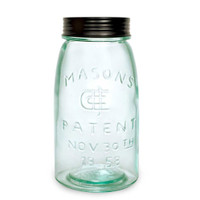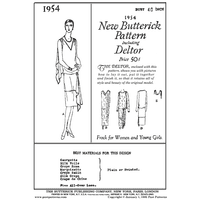 Loading... Please wait...
Loading... Please wait...Categories
Add to Wish List
New Products
- Home
- Historic Patterns
- By Maker
- Past Patterns
- Lewis & Clark Era Empire Gown
Product Description
This pattern was pulled, with permission, from the extant garment in the Wayne County Historical Museum in Richmond, Indiana. The gown has no history. It is a day dress. The threads are hand spun and the fabric is hand woven of linen warp and cotton weft. The background is white, interrupted every 7/8 inch by alternate threads of madder red and indigo blue. Unlike today's fabric, the stripes are at a right angle to the salvage. Pictured below is the dress fabric. The two lining fabrics also pictured were probably cut from scraps. The thread count is approximately 50 warp and 44 weft. This gown dates to circa 1796 to 1806.
Illustrated instructions for sewing the garment by hand are included, however, this is an easy garment to sew by machine.
The bodice conservatively cut yet it has the fashionable small back of the period. As a result of the small back the sleeves form the shoulders, creating a very comfortable fit. Drawstrings fasten the center front closed at the neck and waist. The bodice is lined. The front lining is loose from the armholes to center front. It crosses over and fastens at center front with straight pins. This front lining does not support the bust. It is to help hold the front closed. A corset is worn with this garment.
The pleated skirt is fullest in the back and flat in the front. A 1-1/2 inch crescent-shaped tuck at center front raises the skirt over the toes.
Sizes 8 through 14 require 4-1/2 Yds.; sizes 16 through 20 require 5 Yds. and sizes 22 through 26 require 5-1/2 Yds. of 45 inch wide fabric.










